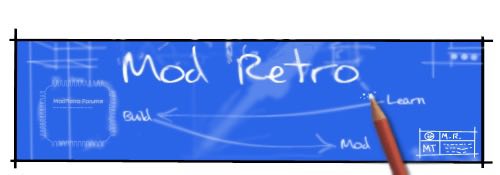XCVG
ModRetro Legend
So, I got my Arduino and stuff Wednesday, and I've been playing with it ever since. This is sorta blogging I guess, but it is going to be sort of a worklog and is hacking related.
First off was assembly. The version of Arduino I got is the Freeduino SB, which is a mini-kit. That means that most of the stuff is already soldered on but you have to solder connectors and headers and things on. It was actually really easy and I think I did a good job getting the headers on . After I tested it I put together the protoboard. There are instructions on the web, but they are outdated and just plain suck
. After I tested it I put together the protoboard. There are instructions on the web, but they are outdated and just plain suck  . So now I have a 4-pin header with 3-pins, because it said to clip one pin off first. It turns out that part isn't even necessary. At first it didn't work because I was tired and forgot to solder the headers on all the way. I had taped them down and soldered the end pins, made them straight, and then forgot to solder the rest of the pins
. So now I have a 4-pin header with 3-pins, because it said to clip one pin off first. It turns out that part isn't even necessary. At first it didn't work because I was tired and forgot to solder the headers on all the way. I had taped them down and soldered the end pins, made them straight, and then forgot to solder the rest of the pins  . My mini-breadboard is a bit messed up because I put it on wrong and pried it off. The sticky tape on the back is the only thing that holds the socket-pin thingys in too
. My mini-breadboard is a bit messed up because I put it on wrong and pried it off. The sticky tape on the back is the only thing that holds the socket-pin thingys in too  . But soon after I had an LED blinking.
. But soon after I had an LED blinking.
After that I tried making my own programs and stuff. The Arduino programming is a simplified version of C/Java and is pretty easy to do. When I tried my button-LED program it didn't work because I forgot semicolons on the end of each line. Forgot how sensitive C was to that.
Wiring up the LCD was a little more interesting. I mostly followed Adafruit's instructions but I was tired and didn't read them fully. For example, the R/W pin needs to be tied to ground, which I forgot to do and eventually just wired up to the Arduino. Also, the datasheet for my LCD is utter garbage, with lots of useless technical information you'll never use but very little in the way of instructions . After burning out a potentionmeter (don't ask me how) I tied the "LCD Supply Voltage" line to +5V, which didn't work. Turns out that line is actually contrast control
. After burning out a potentionmeter (don't ask me how) I tied the "LCD Supply Voltage" line to +5V, which didn't work. Turns out that line is actually contrast control  . Tried a potentiometer, fried it somehow, so I just tied it to ground and it works now. I was really happy when the example program finally worked.
. Tried a potentiometer, fried it somehow, so I just tied it to ground and it works now. I was really happy when the example program finally worked.
Pics and more coming soon!
First off was assembly. The version of Arduino I got is the Freeduino SB, which is a mini-kit. That means that most of the stuff is already soldered on but you have to solder connectors and headers and things on. It was actually really easy and I think I did a good job getting the headers on
 . After I tested it I put together the protoboard. There are instructions on the web, but they are outdated and just plain suck
. After I tested it I put together the protoboard. There are instructions on the web, but they are outdated and just plain suck  . But soon after I had an LED blinking.
. But soon after I had an LED blinking.After that I tried making my own programs and stuff. The Arduino programming is a simplified version of C/Java and is pretty easy to do. When I tried my button-LED program it didn't work because I forgot semicolons on the end of each line. Forgot how sensitive C was to that.
Wiring up the LCD was a little more interesting. I mostly followed Adafruit's instructions but I was tired and didn't read them fully. For example, the R/W pin needs to be tied to ground, which I forgot to do and eventually just wired up to the Arduino. Also, the datasheet for my LCD is utter garbage, with lots of useless technical information you'll never use but very little in the way of instructions
 . After burning out a potentionmeter (don't ask me how) I tied the "LCD Supply Voltage" line to +5V, which didn't work. Turns out that line is actually contrast control
. After burning out a potentionmeter (don't ask me how) I tied the "LCD Supply Voltage" line to +5V, which didn't work. Turns out that line is actually contrast control Pics and more coming soon!


